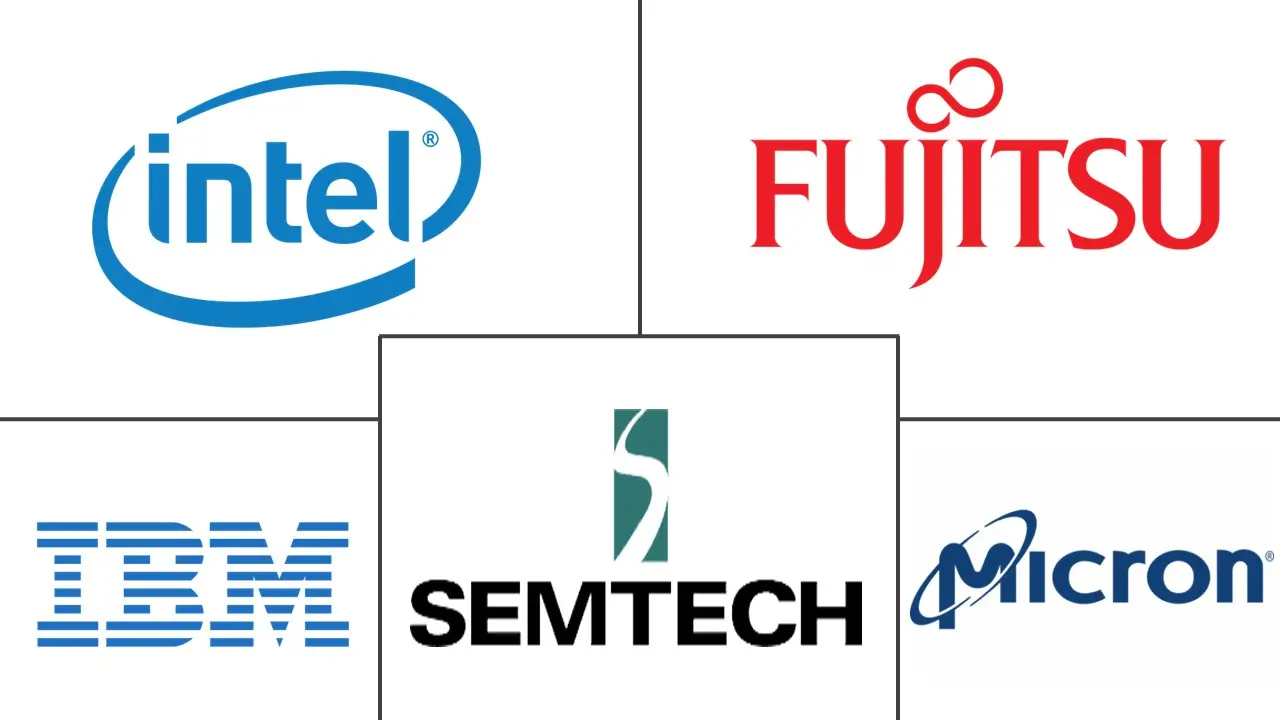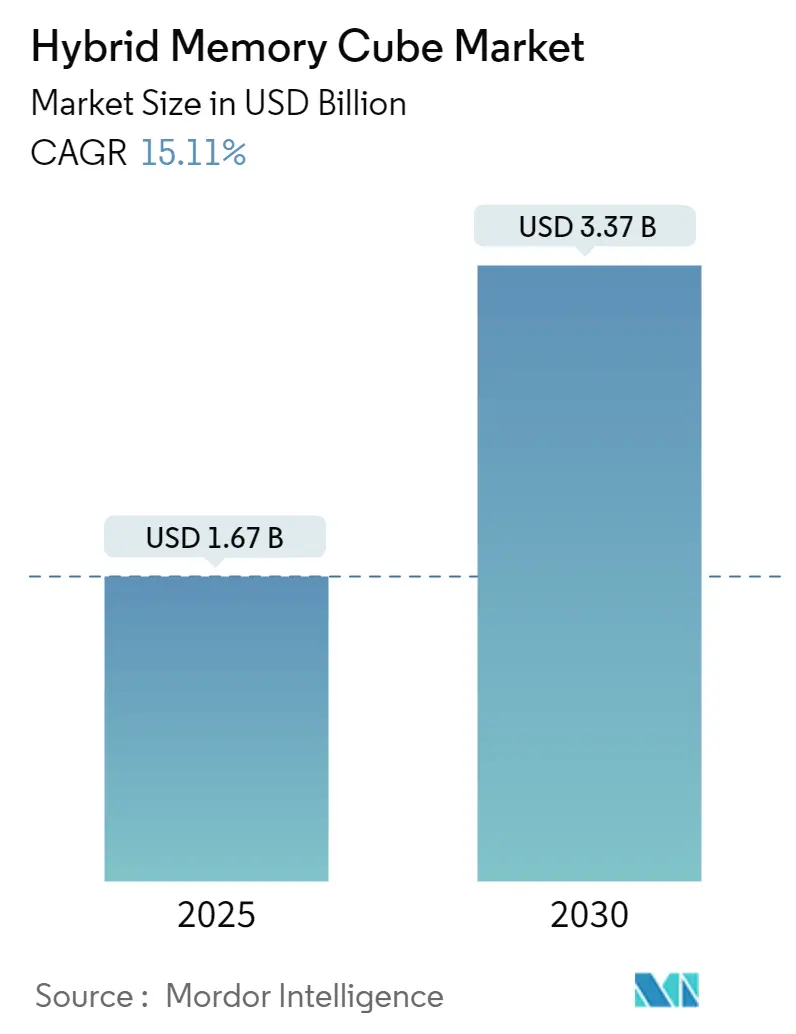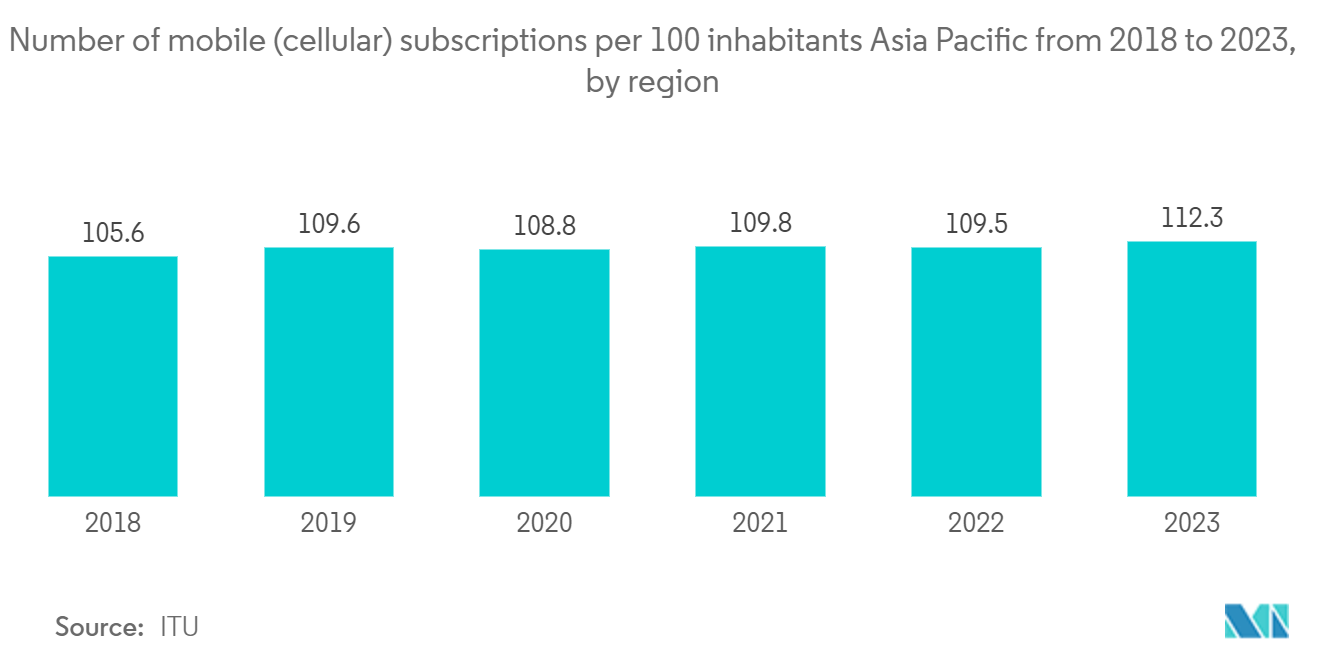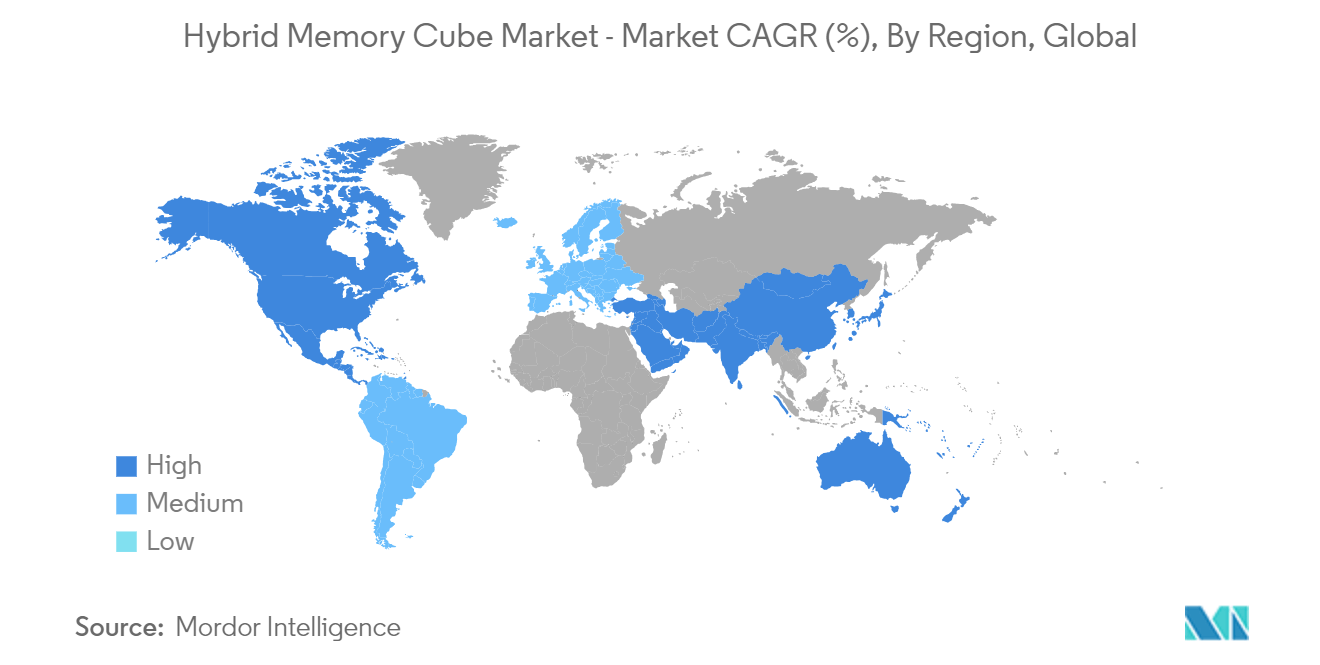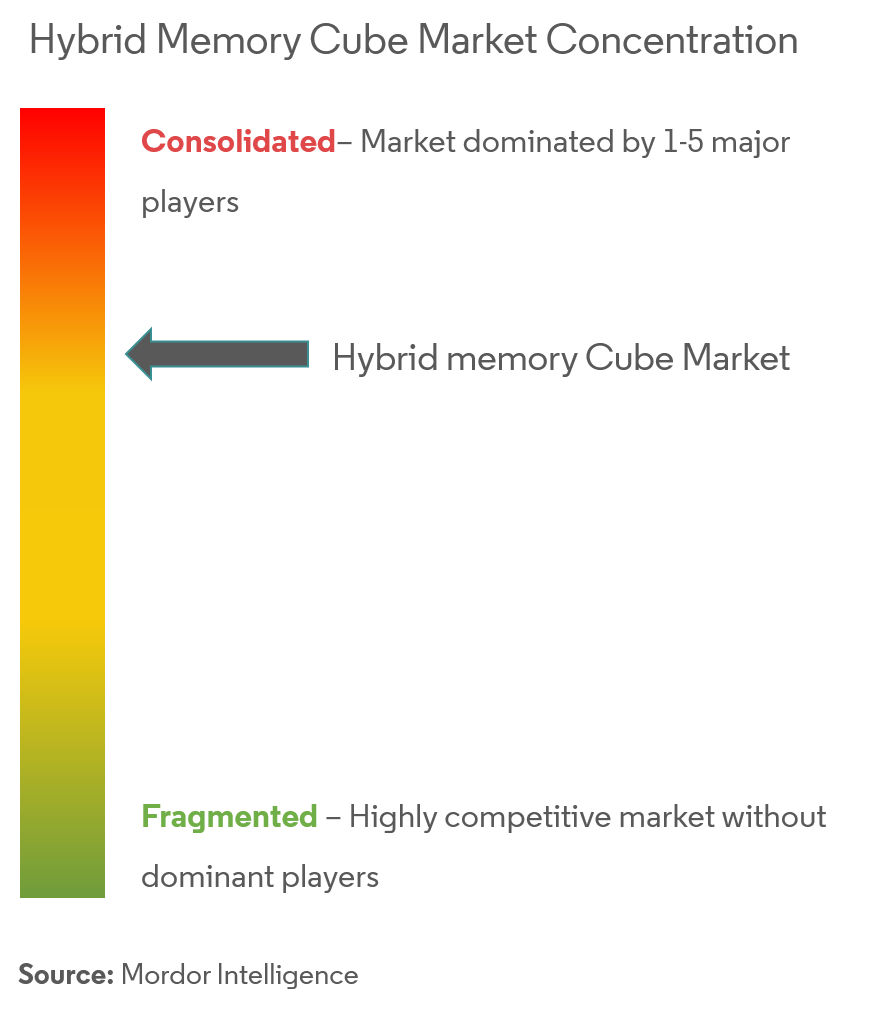Hybrid Memory Cube Market Analysis
The Hybrid Memory Cube Market size is estimated at USD 1.67 billion in 2025, and is expected to reach USD 3.37 billion by 2030, at a CAGR of 15.11% during the forecast period (2025-2030).
A hybrid memory cube (henceforth called HMC) is a revolutionary technology that signifies a paradigm shift from current memory architectures.
- The significant factors driving the Hybrid Memory Cube (HMC) market expansion are the rising number of server farms and employees, the increasing shipments of business equipment, and the rising number of assembling activities in the venture stockpiling and consumer hardware sectors. In May 2023, orders for business equipment from United States factories increased for a second consecutive month, suggesting that companies persist in making substantial investments despite elevated borrowing costs and economic uncertainties. The market for Hybrid Memory Cube (HMC) and High-bandwidth memory (HBM) is expanding due to factors like the increasing need for high bandwidth, rising artificial intelligence (AI) use, and developing trends in electronic device downsizing.
- HMC is redefining memory by enabling advancements that can replace conventional DRAM-based systems. It is setting a new standard in the memory market that matches the computing speeds realized by existing systems (such as CPU).
- HMC dramatically improves bandwidth and performance by breaking through the memory wall. The architecture of HMC is exponentially more efficient than current memory architectures, utilizing 70% less energy per bit than current DRAM technologies. For instance, Synopsys Inc. announced the availability of its next-generation Verification IP (VIP) for Micron's Hybrid Memory Cube (HMC) architecture. This can enable Micron's HMC with ease of use, fast integration, and optimum performance, resulting in accelerated verification closure.
- The ever-increasing demand for mobility and the rising impact of cloud services are expected to further create demand for HMC solutions, owing to their higher bandwidth, which boosts the capability of networking systems to match line speed performance.
- The COVID-19 pandemic impacted worldwide sectors and negatively impacted the global economy. Many industries, such as semiconductors, consumer electronics, travel, and automobiles, were severely affected due to the pandemic, which negatively impacted the hybrid memory cube market.
- Post-COVID, the hybrid memory cube market experienced notable shifts; the increased demand for remote work and digital transformation fueled the need for enhanced computing capabilities. As businesses adapted to hybrid web models, there was a surge in data-intensive tasks driving the demand for high-performance memory solutions like HMC. The pandemic accelerated technology adoption, emphasizing the importance of efficient data processing and storage, positively influencing the HMC market.
Hybrid Memory Cube Market Trends
Telecommunications and Networking Segment is Expected to Register a Significant Growth
- The telecommunications and networking segment's anticipated growth in the hybrid memory cube (HMC) market is likely due to increasing demand for high-speed data processing and transfer in these sectors.
- HMC technology offers enhanced performance, bandwidth, and energy efficiency compared to traditional memory solutions, making it well-suited for meeting the demands of telecommunications and networking applications. As these industries continue to expand and adopt advanced technologies like 5G and edge computing, the need for efficient memory solutions like HMC is expected to rise, driving growth in this segment of the market.
- The global telecommunication sector is continuously transitioning as infrastructure improvements to broadband and mobile technologies continue. Hybrid memory cubes are increasingly used for high-performance computing (HPC), which can be termed as the set of distributed and parallelization techniques used to connect computing units to perform more complex tasks faster.
- Edge computing networks and telecommunication technologies support information transmission over distances via., connected and distributed communication devices. Rapid innovations in transmitting, switching, processing, analyzing, and retrieving information are essential for the success of various emerging telecommunication technologies, and this is likely to indirectly influence the growth of the HMC market over the forecast period. The advent of 5G is expected to boost the HMC market. For instance, according to the GSMA report, by the end of 2030, there will be around 1.4 billion 5G connections in Asia Pacific.
Asia-Pacific is Expected to Witness Fastest CAGR
- The region's industries, such as retail, healthcare, IT, and telecommunication, need advanced and fast data processing systems due to the increasing consumer base and data traffic. Moreover, China wishes to establish a world-class IC design unit in applications, such as telecommunications, IoT, big data, and cloud computing industries, which is expected to further boost the HMC market.
- The enormous amount of data generated through the connected devices and the emergence of Big Data applications have put intense pressure on the data center memory systems and capacity, making the companies look for solutions to the problem. HMCs have a huge potential that could reduce not only the workload but also increase the performance and reduce power consumption by the data centers.
- In May 2023, Micron Technology has announced its intention to invest up to JPY 500 billion (USD 3.6 billion) in Japan over the next few years, with the support of the Japanese government to rise its business in next-generation memory chips. This strategic move reflects the Japanese government's determination to revitalize its semiconductor industry and enhance the country's chip supply chain. It also aligns with their efforts to introduce advanced chip technology to Japan, particularly in light of the growing tensions between the United States and China.
- The development of internet infrastructure in Asia-Pacific leads to the employment of modular data centers in this region. Therefore, Asia-Pacific companies of all sizes and industries are embracing the digital revolution. It is also driving data center providers and users to continuously increase their investment in the construction and services of modular data centers. Due to these significant measures, Asia-Pacific is expected to account for the highest growth rate of 58.57% over the forecast period.
Hybrid Memory Cube Industry Overview
The competitive rivalry among the players in the hybrid memory cube market is high due to the presence of many major players. Some major players include Micron Technologies, Samsung, Intel, Fujitsu, and many more. The innovations brought about by these players in their products and their ability to introduce a new product in the market by forecasting the needs of their consumers has enabled them to gain a competitive advantage over other players. Hefty investments in research and development, strategic partnerships, and mergers and acquisitions in the field of HMC have enabled the companies to capture a significant market share.
- May 2023 - SK hynix, a manufacturer of DRAMs, announced the expansion of its legacy processes in its Wuxi, China fab, instead of transitioning to more advanced production processes focusing on DDR3 and DDR4 4Gb products, due to the US ban imposed on semiconductor manufacturing equipment in the country.
- January 2023 - Aerospike enabled businesses to make real-time or nearly real-time decisions with the help of its modern data platform, which can handle globally resilient applications, function at an infinite scale, and provide predictable performance and cost-effectiveness.
Hybrid Memory Cube Market Leaders
-
Micron Technologies Inc.
-
Intel Corporation
-
Fujitsu Ltd.
-
Semtech Corporation
-
Open Silicon Inc.
- *Disclaimer: Major Players sorted in no particular order
Hybrid Memory Cube Market News
- September 2023 - Samsung Electronics recently introduced the Low Power Compression Attached Memory Module (LPCAMM) form factor, marking a significant advancements in the DRAM market for personal computers, laptops, and potentially data centers. This enhanced development, boasting a remarkable speed of 7.5 gigabits-per-second (Gbps), has successfully undergone rigorous system verification on Intel's platform.
- May 2023 - Taiwan Semiconductor Manufacturing Co. (TSMC) announced plans to further expand its investments in Japan and strengthen its collaboration with semiconductor partners in the country. Currently, TSMC is in the process of building its inaugural foundry in Kumamoto Prefecture, located in Southern Japan, in partnership with Sony Group Corp.
Hybrid Memory Cube Industry Segmentation
Hybrid Memory Cube (HMC) is a high-performance, multilayered memory architecture that integrates advanced dynamic random access memory (DRAM) technology to increase bandwidth and energy efficiency in data-intensive applications. HMCs are used in the fields of consumer electronics and high-performance computing.
The hybrid memory cube market is segmented by End-user Industry (Enterprise Storage, Telecommunications and Networking, and Other End-user Industries) and Geography (North America, Europe, Asia-Pacific, Latin America, and Middle East and Africa). The market sizes and forecasts are provided in terms of value (USD) for all the above segments.
| By End-user Industry | Enterprise Storage | ||
| Telecommunications and Networking | |||
| Other End-user Industries | |||
| Geography | North America | United States | |
| Canada | |||
| Europe | United Kingdom | ||
| Germany | |||
| France | |||
| Rest of Europe | |||
| Asia-Pacific | China | ||
| Japan | |||
| South Korea | |||
| Taiwan | |||
| Rest of Asia-Pacific | |||
| Rest of the World | Latin America | ||
| Middle-East & Africa | |||
Hybrid Memory Cube Market Research FAQs
How big is the Hybrid Memory Cube Market?
The Hybrid Memory Cube Market size is expected to reach USD 1.67 billion in 2025 and grow at a CAGR of 15.11% to reach USD 3.37 billion by 2030.
What is the current Hybrid Memory Cube Market size?
In 2025, the Hybrid Memory Cube Market size is expected to reach USD 1.67 billion.
Who are the key players in Hybrid Memory Cube Market?
Micron Technologies Inc., Intel Corporation, Fujitsu Ltd., Semtech Corporation and Open Silicon Inc. are the major companies operating in the Hybrid Memory Cube Market.
Which is the fastest growing region in Hybrid Memory Cube Market?
Asia Pacific is estimated to grow at the highest CAGR over the forecast period (2025-2030).
Which region has the biggest share in Hybrid Memory Cube Market?
In 2025, the North America accounts for the largest market share in Hybrid Memory Cube Market.
What years does this Hybrid Memory Cube Market cover, and what was the market size in 2024?
In 2024, the Hybrid Memory Cube Market size was estimated at USD 1.42 billion. The report covers the Hybrid Memory Cube Market historical market size for years: 2019, 2020, 2021, 2022, 2023 and 2024. The report also forecasts the Hybrid Memory Cube Market size for years: 2025, 2026, 2027, 2028, 2029 and 2030.
Our Best Selling Reports
Hybrid Memory Cube Industry Report
Statistics for the 2025 Hybrid Memory Cube market share, size and revenue growth rate, created by Mordor Intelligence™ Industry Reports. Hybrid Memory Cube analysis includes a market forecast outlook for 2025 to 2030 and historical overview. Get a sample of this industry analysis as a free report PDF download.

